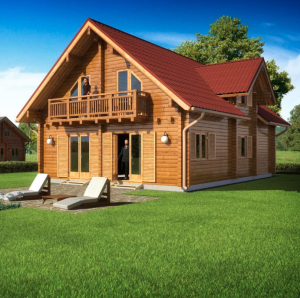The evolution of prefabricated houses
The development of prefabricated houses, as a kind of construction method pre-fabricated in factories and then assembled on site, can be traced back to several centuries ago, and has evolved continuously under the impetus of modern technology to become an important part of the modern construction field that cannot be ignored. This article will outline the development of prefabricated houses, from their origins to their modern applications, showing their characteristics and contributions at different stages of history.

Prefabricated houses at a good price
Origin and Early Development
The concept of prefabricated buildings can be traced back as far as ancient civilizations. Prefabricated components were used to build houses during the Mesopotamian civilization, and the technique was then widely used during the Roman Empire for the construction of fortresses and public buildings. In modern times, prefabricated building techniques were further developed with the advent of the Industrial Revolution. prefabricated farmhouses and cottages gained popularity in the late 18th and 19th centuries, especially during the Gold Rush and the Migration Rush, when prefabricated buildings were favored for their convenience and low cost.
The late 19th and early 20th centuries saw important milestones in precast construction. 1889 saw the construction of the famous Eiffel Tower in Paris by Gustave Eiffel, an iconic structure assembled almost entirely from prefabricated iron components, demonstrating the enormous potential of precast construction for large-scale structural projects. Subsequently, precast concrete apartments began to appear in places such as the United Kingdom and North America, and precast building technology gradually transitioned from temporary housing to permanent buildings.
Period of industrialization and standardization
In the 20th century, precast construction began to be widely used worldwide, especially in the fields of residential construction and infrastructure construction. With the advancement of industrialization, the standardization of building materials and the improvement of manufacturing technology, the cost of prefabricated buildings was further reduced and the construction period was shortened significantly. During the two world wars, prefabricated buildings were widely used to solve the housing shortage problem and became an important force in post-war reconstruction because of their rapid construction and low cost.
In China, the development of prefabricated buildings started late but developed rapidly. In the 1950s, the Chinese government began to pay attention to the development of construction industrialization and promulgated the Decision on Strengthening and Developing the Construction Industry in 1956, marking the starting point of China's prefabricated construction industry. However, due to the limitations of the planned economy system at that time, the evolution of prefabricated buildings was relatively slow. After the reform and opening up, with the establishment of market economy system, prefabricated building industry gradually entered into a rapid development stage, and the technical level and market scale have been significantly improved.
Modern technology and wide application
In the 21st century, prefabricated buildings have ushered in new development opportunities with the advancement of science and technology and the continuous development of the construction industry. the introduction of technologies such as BIM (Building Information Modeling), 3D printing and automation has made the manufacturing of prefabricated components more precise and efficient. At the same time, prefabricated buildings have been widely used in a variety of fields, including residential, commercial and industrial, and have become an important part of modern architecture.
In China, the evolution of the prefabricated building industry is particularly prominent. With the acceleration of urbanization and continuous population growth, prefabricated buildings have been widely used in residential construction, commercial buildings, industrial plants and other fields due to their advantages such as short construction period, controllable quality, energy saving and environmental protection. The government has also actively supported the development of the prefabricated building industry through a series of policy measures, such as land supply, financial subsidies and tax incentives.
Challenges and Future Prospects
Despite the many advantages of prefabricated buildings, their evolution still faces some challenges. Problems such as lax quality control, poor coordination between design and the surrounding environment, and varying levels of construction technology and personnel need to be gradually resolved in the course of development. In addition, the market acceptance of prefabricated buildings still needs to be improved, and consumers' doubts about their quality and performance need to be dispelled through actual cases and publicity.
However, with the continuous progress of science and technology and the deepening of the concept of environmental protection, the prospects of the prefabricated building industry remain bright. In the future, prefabricated buildings will pay more attention to technological innovation and sustainable development to meet the diversified needs of the market by continuously improving product quality and performance. At the same time, the government will continue to increase support to promote the healthy evolution of the prefabricated building industry.
In conclusion, the evolution history of prefabricated houses is a process of continuous evolution from ancient civilization to modern technology. In this process, prefabricated buildings have become an indispensable part of the modern construction field with their unique advantages and application value. With the continuous progress of technology and the continuous expansion of the market, prefabricated houses will certainly play a more important role in the future construction field.
Know more:https://baijiahao.baidu.com/s?id=1804416911104281576&wfr=spider&for=pc
Post time: 09-11-2024







